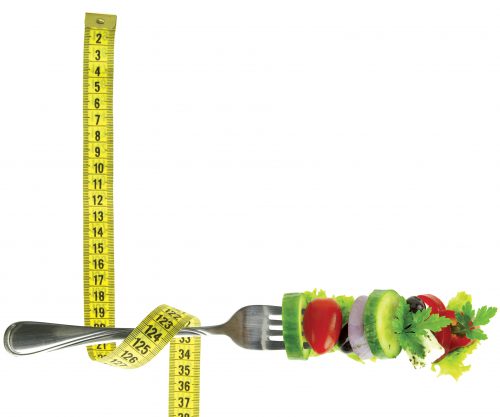
There are a lot of diets and eating ‘lifestyles’ that claim to be the healthiest. The initial attraction is often weight-loss but weight-loss isn’t sustainable unless you stick to the diet forever. And if we did stick with it, would that be healthy? HFG senior nutritionist Rose Carr investigates.
Clean eating
Clean eating is not usually prescriptive about which foods we should or shouldn’t eat; it’s focused on the type of foods to eat. The key principle is to eat whole foods such as whole vegetables and fruit, whole grains, grass-fed and free-range meats, low-fat dairy products and unsalted nuts and seeds. While unprocessed or minimally processed foods are preferred, clean eaters will eat packaged food if they recognise all the ingredients on a pack as food.Preparing your own meals is also encouraged so both the flavour and integrity of the fresh food is maintained, and the addition of lots of fat, sugar or salt can be avoided.
What’s good about clean eating?
It’s hard to fault a way of eating that says start with real food and mess with it as little as possible! We also like that whole food groups are not banished so it’s not hard to eat a nutritionally-balanced diet.
Watch points
- Free-range and organic foods are usually more expensive.
- Not everyone has the time to prepare absolutely everything from scratch.
- Don’t let ‘clean’ be a jump-off point for obsessive thinking about food.
Vegetarian or vegan
Vegetarians don’t eat animal flesh (red meat, poultry, fish and seafood) so the diet is based on plant foods — grains, legumes, vegetables, fruit, nuts and seeds. There are different degrees of vegetarian eating: some following the basics of a vegetarian diet may include dairy products and eggs. Vegans exclude milk, eggs and all foods containing any animal-derived ingredient.
What’s good about vegetarian eating?
There’s plenty of research showing that balanced vegetarian diets are associated with reduced risk of cardiovascular disease and type-2 diabetes, the two big issues related to a poor Western diet.
Watch points
- It may be harder to get all the nutrients we need if we are changing to a vegetarian diet, so knowledge and planning are important.
- Women’s needs for iron vary and those with high iron needs may find it difficult to get enough. If in doubt, get iron stores checked as this will affect energy levels.
- People following a vegan diet will need to supplement with vitamin B12 or ensure they consume B12-fortified foods as this essential vitamin is only found (naturally) in animal-derived products.
- It is still possible to consume lots of junk food on a vegetarian diet.
The paleo diet
The Paleo diet is based on the idea that we ought to eat like our pre-agricultural, hunter-gatherer ancestors because that’s how we were designed. There are some obvious flaws in the idea, as many of the plants our ancestors ate no longer exist; there was not one paleo diet, it varied depending on where on earth our ancestors lived; and we are probably not doing anywhere near the physical activity they did as they had to hunt for food. The diet advises us to eat lean meat and poultry, fish and other seafood, eggs, vegetables, fruit, nuts and seeds. The Paleo diet excludes all grains, legumes (including peanuts), dairy foods, sugar, potatoes, processed foods, salt and refined vegetable oils.
What’s good about Paleo?
We like the emphasis on natural, unprocessed foods. The way many of us are eating today is literally killing us and cutting out the refined processed foods we don’t need would be a vast improvement for many people. In fact, those following the Paleo diet in short-term intervention studies have shown positive results ranging from weight-loss to better blood glucose levels and improvements in risk factors for heart disease. While people tend to focus on the meat component of this diet, a healthier version of paleo eating includes lots of vegetables.
Watch points
- Unless we have a specific allergy or intolerance there’s no reason to exclude good quality grains, legumes and reduced-fat dairy from our diets and there are many good reasons to include them.
- This is probably not for the environmentally-conscious: meat typically has a high environmental impact compared to other foods.
- Beware the Paleo marketing machine: we all know our ancestors didn’t eat paleo cookies!
Mediterranean diet
The traditional Mediterranean diet (as opposed to what many in the Mediterranean may eat today) is distinguished by high intakes of vegetables, fruit, whole grains, nuts and olive oil; moderate intakes of fish and poultry; and low intakes of dairy products, red meat, processed meats and sweets. Wine (often red) is consumed with meals and in moderation.
What’s good about the Mediterranean diet?
Again, we see a focus on plant foods and while no food groups are banned, it’s important to note that consumption of red meat, dairy and sweet treats are limited. Wine consumption is not necessary but it does highlight that with food, and in moderation, it can be consumed as part of a healthy lifestyle. There has been a lot of research on this diet and studies show it significantly lowers the risk of heart disease, obesity and cancer.
Watch points
- If we want to follow this diet and reap the rewards, we need to pay careful attention to the portion sizes of foods such as processed meats and sweet treats — these are occasional foods (and think occasionally this month, not occasionally this week or today!)
- A traditional Mediterranean diet probably includes less wine than we may imagine.
Raw diet
A raw food diet is based on foods that are unprocessed, unrefined, cold-processed and not heated above 44°C. The idea is to ensure living enzymes in food remain intact so the food will be more easily digested and deliver more benefits for your body. Whole, preferably organic plant foods such as fruits, nuts, seeds, land and sea vegetables, roots, sprouted grains, pulses and legumes form the basis of the diet. Cold-pressed olive and coconut oils are commonly used. Raw food followers are often vegan, but some eat raw animal products such as unpasteurised milk, raw fish and even raw meat. Raw foodists aim for around 75 per cent of their foods fulfilling the ‘raw’ criteria.
What’s good about raw eating?
The basis of the diet is raw, whole food, so that’s a good place to start. There’s little evidence around this particular way of eating although a few studies have shown raw food dieters tend to consume fewer kilojoules than those on other diets.
Watch points
- This tends to be a very low-protein diet.
- Vitamin B12 will need to be added.
- Coconut oil is around 90 per cent saturated fat and the evidence says it will harden our arteries just as quickly as too much butter or cream.
- Some raw ‘treats’ have more fat and kilojoules than regular ‘unhealthy’ versions.
- If you include unpasteurised milk or cheese, be sure not to share it with anyone with a compromised immune system, especially young children, older people or pregnant women, as this can be dangerous.
Low-carb diet
Low-carb dieting was first popularised in the 1970s by the Atkins diet and it’s now enjoying a revival as the low-carb high-fat diet. This diet dramatically restricts the amount of carbohydrates eaten, so grains, legumes, starchy vegetables and most fruits are out. We are told to eat non-starchy vegetables, meat (including the fat), fish, eggs, full-fat dairy and nuts.
What’s good about low-carb eating?
People following this diet are consuming natural foods, including plenty of vegetables, and avoiding foods such as cakes, pies, potato chips and sugar-sweetened drinks that can be responsible for excess weight and its associated problems in so many people.
Watch points
- Proponents refute the vast amount of scientific evidence around the heart health dangers of consuming high amounts of saturated fat. This is potentially dangerous and more research is needed to see the long-term effects of this diet.
- There are good reasons to eat high-quality carbohydrates, especially for bowel health.
- This diet, potentially, may be difficult to implement in a busy lifestyle and to sustain long-term.
Which diet is healthiest?
Almost any weight-loss diet will work if we stick to the ‘rules’ and ideals of that diet. We lose weight on restrictive diets simply because we’ve reduced the kilojoules we’re consuming, no matter what foods the kilojoules come from. Losing weight when we have been overweight is usually associated with better health measures and more exercise, too.
Believe it or not, losing weight is not the big problem with diets. Keeping it off is the issue. We often feel deprived on these diets and can’t sustain that way of eating long term. To maintain weight we need a long-term, sustainable way of eating. A recent study by Yale university doctors David Katz and Stephanie Meller reviewed the research around dietary patterns including low-carb, low-fat, low-GI, Mediterranean, mixed-balanced, paleo and vegan. And guess which won? There was no clear winner; there were many different ways to eat a healthy diet. However, the evidence was consistent that a diet based mainly on plant foods and with greater emphasis on natural unprocessed foods was better for us.
Bottom line
The perfect diet is the one that works for you: you can stick with it, you can afford it, you have time to prepare the food and it keeps you healthy. This will not be a one-size-fits-all solution but we do know the more plant foods and the less processed foods we eat, the better off we’ll be. People with the healthiest diets do not ‘diet’. They enjoy food. So if a diet divides foods into what you can and can’t eat, we think it’s probably not a forever way of eating.
Article sources and references
- Estruch R et al. Primary prevention of cardiovascular disease with a Mediterranean diet. New England Journal of Medicine DOI:10.1056/ NEJMoa1200303https://www.nejm.org/doi/full/10.1056/NEJMoa1200303
- Garnett T. 2014. What is a sustainable healthy diet? A discussion paper. Food Climate Research Network www.fcrn.org.ukhttps://www.fcrn.org.uk/
- Hu EA et al. 2013. Lifestyles and Risk Factors Associated with Adherence to the Mediterranean Diet: A baseline assessment of the PREDIMED trial. PLoS ONE 8:e60166https://www.ncbi.nlm.nih.gov/pubmed/23637743
- Jonsson T et al. 2009. Beneficial effects of a Paleolithic diet on cardiovascular risk factors in type 2 diabetes: a randomized cross-over pilot study. Cardiovascular Diabetology 8:35https://www.ncbi.nlm.nih.gov/pubmed/19604407
- Katz DL & Meller S. Can we say what diet is best for health? Annual Review of Public Health 35:83-103https://www.annualreviews.org/doi/10.1146/annurev-publhealth-032013-182351
- Koebnick C et al. 2005. Long-term consumption of a raw food diet is associated with favorable serum LDL cholesterol and triglycerides but also with elevated plasma homocysteine and low serum HDL cholesterol in humans. The Journal of Nutrition 135:2372-8https://www.ncbi.nlm.nih.gov/pubmed/16177198
- Mayo Clinic. Low-carb diet: Can it help you lose weight? www.mayoclinic.org Accessed December 2014https://www.mayoclinic.org/
- Vegetarian Society of the United Kingdom www.vegsoc.org Accessed December 2014https://www.vegsoc.org/
- Westhoek H et al. 2014. Food choices, health and environment: Effects of cutting Europe’s meat and dairy intake. Global Environmental Change http://dx.doi.org/10.1016/j. gloenvcha.2014.02.004https://www.sciencedirect.com/science/article/pii/S0959378014000338
- Williams P. The pros and cons of carbohydrate intake in modern Australia and New Zealand — an overview of their health effects. ILSI and GLNC seminar 19 March 2013 www.glnc.org.au/wp-content/ uploads/2013/04/ILSIGLNC- CHO-1. Pros-and-cons-ofcarb- intake-P-Williams.pdfhttps://www.glnc.org.au/
www.healthyfood.com










